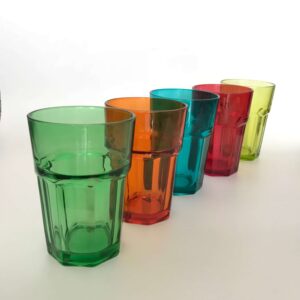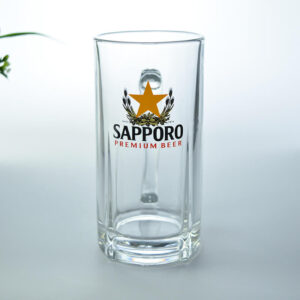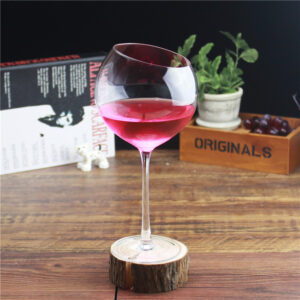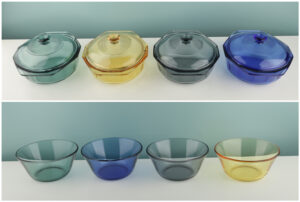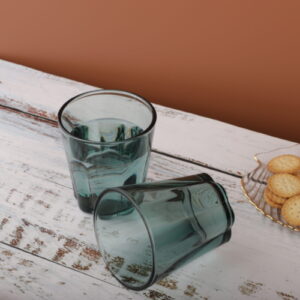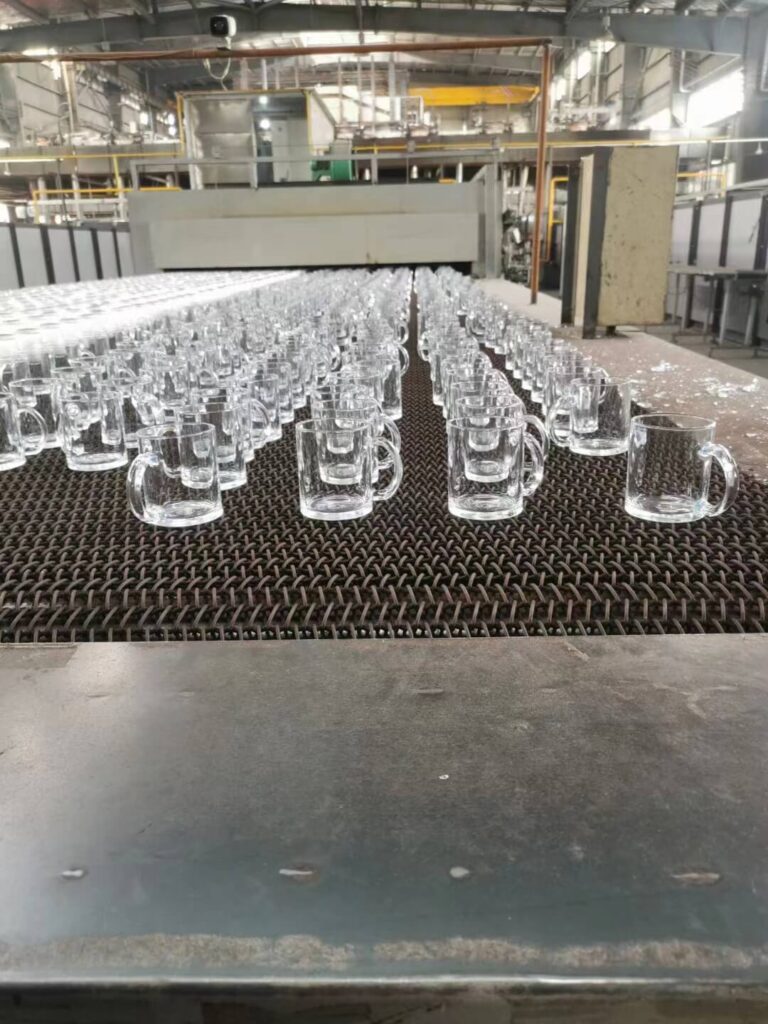How to Import Glasswares from China: A Step-by-Step Guide
In recent decades, the world has seen an unprecedented surge in global trade. One nation that has indelibly inked its name in the annals of international commerce is China. With its expansive landscapes, teeming population, and burgeoning industries, it’s not just a traveler’s dream but a businessman’s paradise. Particularly, when it comes to the manufacture and export of glasswares, China has arguably redefined the landscape.
The Rise of China as a Manufacturing Hub
When one delves into the annals of economic history, it’s astounding to witness China’s transformation. The country transitioned from a primarily agrarian society to a global industrial titan in a matter of decades. It wasn’t serendipity but a calibrated move. The Chinese government’s policies in the late 20th century laid a robust groundwork: special economic zones, tax incentives for foreign investors, and state-of-the-art infrastructure. They married traditional craftsmanship with modern techniques, bringing forth an era of mass production without compromising on quality. This impressive meld of artistry and technology became the keystone for China’s manufacturing prowess. Add to that the labor advantage – a vast, skilled workforce available at competitive prices – and you’ve got a recipe for manufacturing success.
Why China is the Go-to Destination for Glassware Imports
Glasswares are not just vessels to hold our beverages; they’re a testament to art, culture, and finesse. And in the realm of glass, China shines brightly. The nation’s tryst with glass dates back centuries, with artifacts found from ancient dynasties showcasing exquisite craftsmanship. Fast forward to today, and you find that the legacy continues, but with a modern twist.
Chinese manufacturers have tapped into both the domestic and global markets’ zeitgeist. They offer an astounding variety of glasswares – from ornate designs reminiscent of imperial courts to sleek, contemporary styles suited for the chicest of urban dwellings. Their versatility is unmatched, catering to both mass market demands and bespoke requirements.
Moreover, China’s logistical framework is a boon for importers. Seamless connectivity, both via sea and land, coupled with efficient customs procedures, ensures timely delivery. The Chinese business ethos, rooted in building long-term relationships, makes negotiations smooth. They are adept at understanding global market fluctuations and nuances, making them ideal partners in trade.
But, perhaps the most compelling reason is the cost advantage. Importing glasswares from China is economically viable, offering a perfect blend of quality and affordability. This cost-effectiveness doesn’t come at the expense of quality. Rigorous quality checks, adherence to international standards, and a commitment to innovation make Chinese glassware products a class apart.
Understanding the Basics
How many kinds of household glasswares are in China and Key regions in China known for glassware manufacturing?
1- Machine-made home glasswares, including machine pressed and machine blown.
Location: Anhui Province
Material: Soda lime glass
Features: It is the biggest glassware production area here, covering almost all range of household and kitchen items. Such as kinds of glass cups, whiskey glasses, shot glasses, tumblers, also glass bowls and various storage jars. You also can see great home decorations, like glass vases. The most important of all is you can get the most competitive prices, which makes this product a best one for you starting your buiness in your country.
2- Hand made glasses, including wine glasses, champagne glasses, crystal stem glasses.
Location: Shanxi Province
Material: Crystal glass, no-lead glass
Features: Hand made glasswares are glass items that are made by hand, rather than through an automated process. They can include items such as vases, glasses, bowls, plates and more. Each piece is unique and often has a very distinct look and feel to it. Hand made glassware can be a great addition to any home, and can add a unique, personal touch to any room.
Hand–made glasses can be made from different materials such as glass, crystal, and even metal. Each material has its own unique characteristics and advantages. Glass is an inexpensive material and is relatively easy to work with, making it a great option for those on a budget. Crystal is a more expensive material, but it is also more durable and adds a touch of elegance to any glass.
When it comes to choosing the right hand–made wine glass for your occasion, it is important to consider the type of wine you are serving. Different types of wine require different shapes and sizes of glasses. For example, red wines require larger glasses that allow the wine to breathe, while white wines require smaller glasses that will help to preserve the delicate flavors. Additionally, hand–made wine glasses come in various styles and designs, from traditional to contemporary. Whether you are looking for a modern and sleek glass, or something more traditional and ornate, there is sure to be a hand–made wine glass that will suit your needs.
3- Borosilicate glasses, including cups, pots, food containers.
Location: Hebei Province
Material: Borosilicate
Features: Made from borosilicate, with most same model of soda-lime glasswares. But more higher cost than soda-lime glasses. It is known for its high resistance to thermal shock, making it an ideal material for a variety of scientific applications. It is also highly resistant to chemical attack and has excellent optical clarity. It has a low coefficient of thermal expansion compared to other glasses, making it more resistant to thermal shock. Borosilicate glassware is also used in the food and beverage industry, as well as in the laboratory, for quality control and laboratory testing. Borosilicate glassware is also used in a variety of consumer applications, including kitchenware, glassware, and cookware.
Finding Reliable Suppliers
Navigating the world of trade is akin to sailing uncharted waters. Each day brings a new challenge, a new opportunity. At the heart of this voyage lies a crucial element—finding reliable suppliers. A steadfast supplier is not just a transactional entity but a partner in your business growth. Let’s delve into the realm of supplier discovery and strategies to foster trustworthy alliances.
Tips for Researching and Vetting Suppliers
Unearth a supplier, and you’re a step closer to a successful business deal. However, the path to discovering genuine suppliers is strewn with many a pitfall. Here are some time-tested strategies:
- Quality over Quantity: It’s tempting to chase suppliers who offer bulk quantities at throwaway prices. However, a discerning entrepreneur knows that quality trumps quantity. Ensure the suppliers adhere to stringent quality benchmarks, whether it’s raw material sourcing or the final product.
- Seek References: In the global village, your network is your net worth. Reach out to peers, industry insiders, and acquaintances. Personal recommendations often lead to gold-standard suppliers.
- Financial Stability: Before entering into a partnership, gauge the financial stability of potential suppliers. A financially robust supplier is less likely to cut corners, ensuring uninterrupted product flow.
Leveraging Online Platforms: Alibaba, Global Sources, and More
The digital revolution has democratized the search for suppliers. Today, platforms like Alibaba and Global Sources act as bridges between eager buyers and genuine suppliers.
- Dive Deep into Alibaba: While Alibaba offers a plethora of suppliers, it’s essential to exercise caution. Opt for suppliers with a Gold Supplier status and verified certifications. Dive deep into reviews, and don’t hesitate to initiate conversations to gauge responsiveness.
- Global Sources – The Unsung Hero: Often overshadowed by its illustrious counterpart, Alibaba, Global Sources is a treasure trove. The platform focuses on curating high-quality suppliers, making it a haven for discerning buyers. Peruse the Verified Manufacturer tag to ensure authenticity.
Attending Trade Fairs and Expos: Canton Fair Insights
Sometimes, the age-old ways are the best. Trade fairs and expos allow a tangible connection, an opportunity to witness products firsthand and interact with suppliers face-to-face.
- Canton Fair – A Mecca for Importers: Twice a year, Guangzhou becomes a hub of business activity, thanks to the Canton Fair. It’s a confluence of suppliers from diverse sectors, offering a tantalizing array of products. Attending the fair isn’t just about transactions; it’s about building relationships, understanding market dynamics, and witnessing trends. Arm yourself with a clear agenda, business cards aplenty, and an open mind.
You also have some ways to check them:
A. Check their website and social media accounts to get more information about their products and service.
B. Review the feedbacks on their on-line shop.
C. Go ask them directly with all doubts you have. Like their products, sample timing, quality, pricing and delivery times. If they can offer you samples very fast, it will be one good point added. Also, you can check with them if they have related certificate or inspection report issued by SGS or other inspection institute.
D. With above, you will have a brief understanding with the suppliers. But for the best, asking inspection company to do a factory survey is the must. With their report, you almost know everything of the suppliers.
E. Instead of D, you have one more option. To find a production and service company in this area and assign them to do the survey. You don’t need to do business directly with factories but with them. You could save lots of time and money to finish the business.
Building Relationships
In today’s globalized market, businesses are no longer confined by geographical borders. The world has shrunk into a global village, making it essential for entrepreneurs and industry leaders to establish robust relationships worldwide. One such crucial relationship is with China, the world’s manufacturing titan. Delving deeper, we find that the very essence of these relationships is trust, communication, and the human touch.
Communication: Bridging the Cultural Gap
As the old saying goes, “When in Rome, do as the Romans do.” This adage couldn’t be more pertinent when navigating the waters of international business.
- Understanding Nuances: Communication isn’t just about language. It’s about deciphering underlying sentiments, cultural undertones, and sometimes, the unspoken. Grasping these subtleties can transform interactions from mere transactions to enriching exchanges.
- Digital Tools and Platforms: In today’s tech-driven era, leveraging platforms like video conferencing or translation apps can significantly smoothen the communication process. But remember, technology is an enabler, not a replacement for the human touch.
- Celebrate Differences: Instead of perceiving cultural differences as barriers, view them as enriching learning opportunities. Sharing, understanding, and celebrating these differences can lead to a confluence of ideas, spurring innovation.
First-hand Visits: When and Why to Consider a Trip to China
There’s something irreplaceable about face-to-face interactions. Especially when it comes to business relationships.
- The Tangible Experience: While digital platforms provide convenience, a personal visit offers something more – a tangible experience. Walking through production facilities, understanding processes, and gauging the scale of operations can provide unparalleled insights.
- Strengthening the Bond: Meeting in person, sharing a meal, or even a simple handshake can work wonders in solidifying business relationships. These gestures, though seemingly small, can leave lasting impressions.
- Strategic Timing: While frequent visits might not be feasible, consider planning trips around significant milestones. Be it finalizing a deal, introducing a new product, or even addressing concerns, being present can make all the difference.
Negotiating and Finalizing Contracts
Negotiation isn’t just about reaching an agreement; it’s about crafting a symbiotic relationship where all parties feel valued and heard. As global markets continue to intertwine, the importance of ironclad contracts becomes paramount. But before putting pen to paper, it’s essential to delve into the intricacies that form the backbone of these agreements.
Ensuring Quality: The Role of Samples in the Negotiation Process
Quality isn’t just a metric; it’s a promise. And what better way to ensure this promise than samples?
- Tangible Testimony: Samples offer a physical representation of what’s on the table. They help bridge the chasm between expectation and reality, acting as tactile touchpoints of assurance.
- Feedback Loop: Providing samples during the negotiation process isn’t a one-off event. It establishes a feedback mechanism, ensuring products align with specifications and client expectations.
- Negotiation Leverage: A high-caliber sample can strengthen your position at the negotiation table. It’s a testament to your commitment to quality and excellence.
Protecting Your Interests: Payment Terms and Conditions
Money matters. And in the realm of international business, how and when money exchanges hands can shape the trajectory of a partnership.
- Advance Payments: Often, suppliers might request an upfront payment to kickstart production. While this isn’t uncommon, it’s essential to weigh the risks and benefits.
- Letter of Credit: This financial instrument, issued by a bank, ensures that a buyer’s payment to a seller will be received on time and for the correct amount. It’s a safety net, providing assurances to both parties.
- Escrow Services: Acting as a financial intermediary, escrow services protect both buyer and seller. Funds are held “in escrow” until all contract terms are met, ensuring neither party is left in a lurch.
- Net Terms: Terms like “Net 30” or “Net 60” refer to the period, post-delivery, within which payment must be made. It’s crucial to set these terms, ensuring smooth cash flow and fiscal predictability.
Quality Control and Assurance
In an era where consumers wield immense power, businesses that offer subpar products or services face an uphill battle. Quality control and assurance have thus emerged as more than mere terminologies—they are the lifeblood of modern enterprises. Ensuring that a product or service consistently meets certain standards is no longer a luxury; it’s an absolute necessity.
Setting Standards and Expectations
Every craftsman knows that a masterpiece begins with a vision. Similarly, in the business landscape, quality control begins by setting clear, unequivocal standards and expectations.
- Visionary Leadership: A company’s leadership plays a pivotal role in defining quality benchmarks. The process often begins with brainstorming sessions, where the nuances of a product or service are dissected, and optimal standards are delineated.
- Stakeholder Collaboration: Engaging various stakeholders, from suppliers to end-users, can offer multifaceted perspectives. Such collaborations can unearth hidden challenges and offer holistic solutions, ensuring that the set standards are both rigorous and realistic.
- Documenting Excellence: Once standards are set, they should be meticulously documented. These documents act as a beacon, guiding every member of the organization towards a common goal—unwavering quality.
source: lidaglassware.com
Conducting Factory Audits
Factories are the beating heart of production. Hence, ensuring that they operate at peak efficiency, while adhering to stipulated standards, is paramount.
- Preparation is Key: Before conducting an audit, it’s essential to have a clear agenda. Understand the factory’s operations, its history, and potential red flags.
- On-Site Exploration: Walking the factory floor offers invaluable insights. Engage with workers, understand their challenges, and witness the production process firsthand. Such tactile experiences often lead to actionable insights.
- Feedback Loop: Post-audit, it’s crucial to offer constructive feedback. While applauding areas of excellence, it’s also vital to address areas of concern, offering solutions and setting timelines for improvement.
Third-party Inspection Services
While internal audits are essential, third-party inspection services offer an added layer of scrutiny. They bring in objectivity, fresh perspectives, and often a higher degree of expertise.
- Why Go External?: While in-house teams are undeniably crucial, external agencies bring in a fresh pair of eyes. They’re detached, unbiased, and often spot challenges or anomalies that internal teams might overlook.
- Choosing the Right Partner: Not all third-party inspection services are created equal. It’s vital to choose a partner with a proven track record, expertise in your domain, and a reputation for thoroughness.
- Collaboration, Not Confrontation: Engage with these external agencies as collaborators, not adversaries. Their goal is to enhance your product’s quality, ensuring it stands tall in a competitive marketplace.
In conclusion, quality control and assurance are multifaceted processes. They demand rigor, consistency, and a commitment to excellence. By setting clear standards, conducting meticulous audits, and collaborating with third-party inspection agencies, businesses can ensure that they consistently deliver top-notch products and services, fortifying their reputation and ensuring sustained growth. In a world that’s increasingly driven by consumer reviews and word-of-mouth recommendations, there’s no substitute for quality. And businesses that understand this truth stand head and shoulders above the rest.
Handling Logistics
The world of international trade is as intricate as the designs etched on the glassware you’re transporting. From the moment a product leaves the factory to the second it lands in the hands of an end-user, a myriad of decisions determine its journey’s efficiency and cost-effectiveness. When importing glassware from global markets, understanding logistics becomes paramount. Let’s dive into the crux of making informed logistical decisions.
Choosing Between Air, Sea, and Rail Transport
The mode of transport you select isn’t merely about moving products from Point A to Point B. It’s a strategic choice, influenced by myriad factors, from cost to timeliness.
- Air Transport: The speedster of international shipping, air transport ensures your glassware reaches its destination posthaste. Ideal for smaller shipments or products with a tight delivery window, this option, however, can be a tad weighty on the pocket.
- Sea Transport: The tortoise in our tale, sea transport might be slower, but it’s undoubtedly more economical for bulk shipments. Plus, with advancements in maritime technology, the gap between the hare and the tortoise is narrowing.
- Rail Transport: Often overlooked, rail transport strikes a harmonious balance between speed and cost. Especially pertinent when transporting goods across vast land masses like Eurasia, rail offers an efficacious alternative.
Customs Duties and Taxes: What to Expect
It’s not just about getting your products across borders; it’s about understanding the fiscal landscape that underpins these transnational journeys.
- Tariff Nuances: Different products attract different duties. Being conversant with the Harmonized System (HS) code specific to glassware can provide clarity on potential tariffs.
- Value Added Tax (VAT): Often a curveball for new importers, VAT is levied on the value of the goods and, at times, includes shipping and insurance costs. Familiarizing oneself with destination country VAT rates can avert fiscal surprises.
- Duty Drawbacks: A lesser-known facet of international trade, some countries offer refunds on duties if goods are re-exported. An avenue worth exploring for businesses that re-ship products.
Partnering with Reliable Freight Forwarders
A lighthouse amidst the foggy shores of international shipping, freight forwarders guide you through the logistical maze, ensuring your cargo reaches its destination seamlessly.
- The Matchmakers: Freight forwarders liaise between multiple shipping companies, finding the best match based on your specific requirements. It’s like having a personal concierge for your shipping needs.
- Documentation Demystified: From bills of lading to import/export declarations, forwarders ensure all paperwork is in impeccable order, mitigating the risk of customs hold-ups.
- On-Ground Support: Should any hiccups arise – be it a delayed shipment or a customs quandary – having a seasoned freight forwarder ensures there’s always someone to navigate through the storm.
Dealing with Common Challenges
Global trade is akin to a grand symphony, where multiple instruments, from diverse origins, come together to create a harmonious melody. However, as with any orchestral performance, there are instances of missed beats and discordant notes. When dealing with international suppliers, especially in the realm of glassware, challenges are inevitable. But, with the right strategy and approach, these challenges can be transformed into opportunities for growth and understanding.
Addressing Delays and Delivery Issues
In the world of imports and exports, time is more than just money—it’s reputation, trust, and promise. Delays can be the nemesis of smooth business operations, but they aren’t insurmountable.
- Preemptive Planning: Understanding the seasonal flow of the shipping industry can be a game-changer. For instance, the Lunar New Year in China can significantly affect production schedules. By forecasting such events, you can adjust your orders and expectations accordingly.
- Diversified Logistics: Instead of relying solely on one mode of transportation, consider diversifying. While air might be faster, sea transport can carry larger quantities. By having a multi-modal strategy, you can pivot based on the situation.
- Transparent Communication: Informing stakeholders about potential delays not only shows professionalism but also builds trust. An informed client can make adjustments on their end, minimizing disruptions.
Navigating Language Barriers
When east meets west, or north interacts with south, language can sometimes play the role of a mischievous trickster, leading to misinterpretations.
- Leverage Technology: In today’s digital age, tools like Google Translate or DuoLingo can act as bridges over turbulent linguistic waters. While not perfect, they can aid in basic communications.
- Hire Local Expertise: Engaging a native interpreter or liaison can make conversations fluid. This not only ensures clarity but also demonstrates respect towards your supplier’s culture.
- Cultural Education: Beyond just language, understanding cultural nuances can prevent potential faux pas. For instance, in many Asian cultures, the exchange of business cards is a ceremonial act, deserving of care and attention.
Solving Quality Disputes
The chagrin of receiving a consignment that doesn’t match the agreed-upon quality can be significant. However, with the right approach, such disputes can be resolved amicably.
- Clear Documentation: Always ensure that quality expectations are documented in detail. Photos, samples, and detailed descriptions can act as benchmarks, reducing ambiguity.
- Open Dialogue: Instead of approaching disputes with an adversarial mindset, engage in a dialogue. More often than not, suppliers value long-term relationships and are open to finding mutual solutions.
- Third-Party Inspection: Engaging independent quality inspection agencies can provide an unbiased view of the product quality. This not only offers peace of mind but can also act as a deterrent against sub-par production.
Growing and Scaling Your Import Business
Reordering and Establishing Long-Term Contracts
In the import business, consistency isn’t just about maintaining quality; it’s about building steadfast relationships that pave the way for streamlined operations.
- Predictive Inventory Management: Leveraging tools and analytics, forecast your inventory needs. This preemptive approach ensures you never run out of stock, bolstering customer trust and retention.
- Negotiating Mastery: Once you’ve established a rhythm with a supplier, it’s time to negotiate long-term contracts. Such agreements often come with cost benefits and prioritized service, giving you a competitive edge.
- Mitigating Risks: Longer contracts mean deeper dependencies. Implementing a system of regular quality checks and communication channels ensures that both parties are aligned, reducing chances of discrepancies.
Diversifying Your Supplier Base
Relying solely on one supplier is akin to placing all your eggs in one basket—a precarious strategy. Diversifying suppliers is the antidote to this vulnerability.
- Geographical Spread: By sourcing from different regions, you not only mitigate geopolitical risks but also get access to varied designs and specialties in the glassware domain.
- Negotiation Leverage: A broader supplier base gives you a stronger negotiation stance. If one supplier increases prices or reduces quality, you have the flexibility to pivot.
- Innovative Procurement: Different suppliers bring unique innovations to the table. By diversifying, you expose your business to a plethora of cutting-edge glassware designs, ensuring your catalog remains fresh and enticing.
Trend Spotting: Staying Ahead in the Glassware Industry
In the dynamic world of glassware, being a trendsetter isn’t just a title—it’s a crucial strategy for sustainability and growth.
- Consumer Pulse: Conduct regular market research. Understand what consumers are gravitating towards. Is it sustainable glassware? Or perhaps a vintage revival? Stay attuned to these shifts.
- Industry Forums and Expositions: Attend global glassware expos. These melting pots of innovation provide first-hand insights into upcoming trends, allowing you to adjust your procurement strategy accordingly.
- Collaborative Designing: Engage with suppliers for collaborative design sessions. By combining your market insights with their production expertise, you can co-create products that are both unique and in-demand.
Conclusion: Embracing the Opportunities and Challenges of Importing from China
China, with its formidable manufacturing prowess and vast market landscape, has long been a magnet for global importers. The Middle Kingdom offers a cornucopia of products, ranging from high-tech gadgets to exquisite crafts, making it a veritable treasure trove for businesses worldwide.
Yet, importing from China is not a mere transactional endeavor. It’s a journey into a rich tapestry of history, culture, and innovation. Embracing the opportunities therein requires a keen eye for quality, a penchant for negotiation, and an unyielding commitment to quality assurance.
But with opportunities come challenges. The cultural nuances, language intricacies, and the sheer magnitude of the Chinese market can sometimes be daunting. There might be bureaucratic hurdles, logistical conundrums, or even the occasional quality hiccup. However, it’s essential to perceive these not as insurmountable barriers but as learning opportunities. Each challenge, when approached with sagacity and resilience, becomes a stepping stone towards mastery in the art of importing.
For those willing to embrace both the gleaming opportunities and the intricate challenges of importing from China, the rewards are manifold. Beyond the tangible benefits of profitable ventures and diverse product lines, lies the intangible reward of personal and professional growth. By forging connections in the bustling markets of Beijing or the serene landscapes of Yunnan, importers don’t just expand their portfolios; they broaden their horizons, enrich their perspectives, and craft stories of adventures in the global marketplace.


